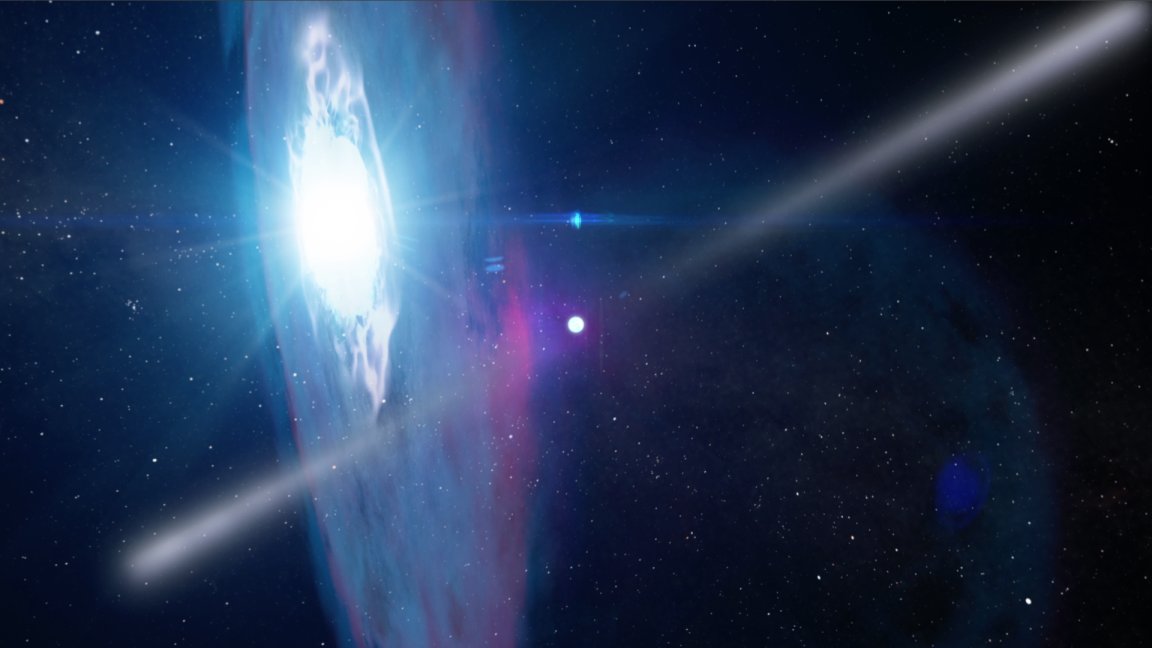
Signal Boost
Over the past decade, we’ve found out a great deal about what fast radio bursts (FRBs) are — millisecond-long blips of intense radio emissions from deep space — but their origins remain a mystery. Now, astronomers have tracked a repeating FRB to a dwarf galaxy nearly three billion lightyears from Earth, according to a report from the Washington Post.
The international team, which presented its work at the annual American Astronomical Society meeting in January 2018, observed that the radio beam was being contorted by a magnetic field within a cloud of ionized gas, telling us more about the conditions these bursts take place in. The study detailing the team’s results was recently published in Nature.

“We see a sort of ‘twisting’ of the radio bursts caused by an effect known as Faraday rotation,” Jason Hessels, one of the co-authors of the study from the Netherlands Institute for Radio Astronomy, told Futurism. “We hypothesize that the source of the bursts could be a neutron star in the proximity of a massive black hole that is accreting material from its surroundings, or maybe that it is a very young neutron star embedded in a nebula (a sort of cocoon around the source).”
“We are basically pushing forward and zooming in even further on where these fast radio bursts are coming from,” co-author Shami Chatterjee, a senior research associate from the Cornell Center for Astrophysics and Planetary Science, told Futurism.
The Mystery of Fast Radio Bursts
When FRBs were first observed, there was some debate as to whether they were legitimate phenomena, or simply interference that was being misinterpreted. Further study established that they are indeed real — just very difficult to observe.
“The biggest issue is the fact that these are millisecond flashes of radiation, and we don’t know where they’re going to go off in the sky,” said Chatterjee. “We think that there’s between five and ten thousand of these flashes going off everyday all over the sky, and yet so far we know only about thirty of these sources. That gives you a sense of the difficulty in terms of finding them, because they just last a millisecond. Radio telescopes don’t have a large field of view; if you’re not looking at the right place in the right time, you won’t see it.”
The first repeating FRB source was spotted in 2016, which provided a much-needed benchmark in the astronomy community’s quest to pinpoint where these phenomena are taking place in order to observe them.
FRBs have captured the imagination of theorists — Chatterjee notes that there are more theories about them than recorded observations — because of the enormous amount of energy involved. In about a millisecond, a burst emits about as much energy as our sun puts out in a day, depending on how broadly it’s being beamed.
“The hope is that eventually, this leads to a step forward in our understanding of physics, in terms of what is a mechanism that can produce this kind of a radio flash with that much energy that we can detect across the universe,” said Chatterjee. “Beyond that, the hope is that once we understand what these radio flashes are, we can use them as tools to study the intergalactic medium.”